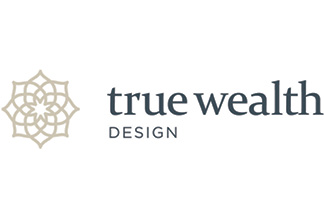Sponsored
Charitable Giving, Philanthropy and Your Financial Life Plan
by Kevin Kroskey, CFP®, MBA
Incorporating charitable giving and philanthropy into your financial strategy isn’t just a smart tax move; it can be profoundly fulfilling. Understanding the intricacies of charitable giving, recognizing the power of philanthropy and employing effective tactics for implementation can empower you to make a tangible difference in the world while staying true to your values.
Charitable Giving Vs. Philanthropy
Charitable giving encompasses a spectrum of contributions, from monetary donations to the transfer of appreciated assets and the utilization of donor-advised funds (DAFs). These contributions can support a range of organizations, from local charities to global nonprofits, each addressing pressing social, environmental, or cultural needs. Moreover, one of the significant advantages of charitable giving lies in its potential for tax deductions, offering a means to reduce taxable income and mitigate tax liabilities.
While both charitable giving and philanthropy involve giving back to the community, they differ in approach and impact. Charitable giving typically entails offering financial or material support to alleviate immediate needs through organizations such as food banks or shelters. In contrast, philanthropy adopts a more strategic outlook, aiming to tackle the root causes of societal issues and foster sustainable, long-term solutions.
Strategies to Consider
Effectively integrating charitable giving into your financial plan necessitates deliberate planning and discernment to ensure your contributions yield maximum impact. Here are some strategies to consider:
Firstly, identify your core values and objectives to guide your philanthropic endeavors and foster more meaningful contributions.
Next, conduct thorough research to identify charities aligned with your values, assessing their efficacy and transparency through platforms like Charity Navigator, GiveWell and GuideStar.
Consider concentrating your donations on a select few organizations to amplify your impact and foster deeper connections with the causes you support.
Ruminate whether you want to focus on charities that prioritize long-term solutions or address needs. Both are needed.
Remember that charitable giving extends beyond monetary donations; volunteering time, donating goods or advocating for causes can be equally valuable forms of contribution.
Take advantage of matching gift programs offered by many companies to amplify the impact of your donations.
Stay engaged with the causes you support, regularly assessing the impact of your donations and staying abreast of developments in those areas.
Inspire others to join you in supporting meaningful causes, multiplying the collective impact of your philanthropic efforts.
Consider leveraging donor-advised funds (DAFs) as a flexible and tax-efficient means of managing charitable contributions, especially for those making substantial donations or seeking to streamline their giving process.
Unsure where to start with your giving plan? Explore your local community foundations who have the intricate knowledge of the needs within your community. You may be surprised by what you learn.
Link to Financial Planning
Depending on the size and duration of your gift, it may be beneficial to explore alternatives to enhance tax or estate benefits from your charitable giving, such as establishing private foundations, creating charitable trusts, or incorporating philanthropic bequests into your estate planning.
Speaking of estate planning, integrating philanthropy into your estate plan ensures your charitable objectives endure beyond your lifetime, leaving a lasting legacy of impact.
Educating future generations about the value of charitable giving is pivotal; involve your family in philanthropic activities to instill values of generosity and compassion while fostering financial literacy and responsibility. Thanksgiving is a great time of year to test having a new family tradition of sharing what you’re thankful for and what charity you’d like to support and why.
Ultimately, striking a balance between charitable giving and other financial goals is crucial. Ensure that your philanthropic endeavors align harmoniously with your overall financial plan, adjusting as necessary to accommodate changing circumstances.
In conclusion, integrating charitable giving and philanthropy into your financial life plan is not only enriching but also empowers you to effect positive change while staying true to your values. Armed with a nuanced understanding of charitable giving, the transformative potential of philanthropy and strategic implementation strategies, your contributions can leave a lasting imprint on the world.
Tax & Wealth Management Services | 330.777.0688 | TrueWealthDesign.com
700 Ghent Road, Suite 100, Akron, OH 44333 | Ft. Myers | Naples | Pittsburgh | Youngstown

Sponsored by
True Wealth Design
Kevin Kroskey, CFP®, MBA is the Founder of True Wealth Design, a wealth management firm with deep expertise in retirement, tax, and investment planning, helping successful families and individuals Plan Smarter and Live BetterTM
Opinions and claims expressed above are those of the author and do not necessarily reflect those of ScripType Publishing.

